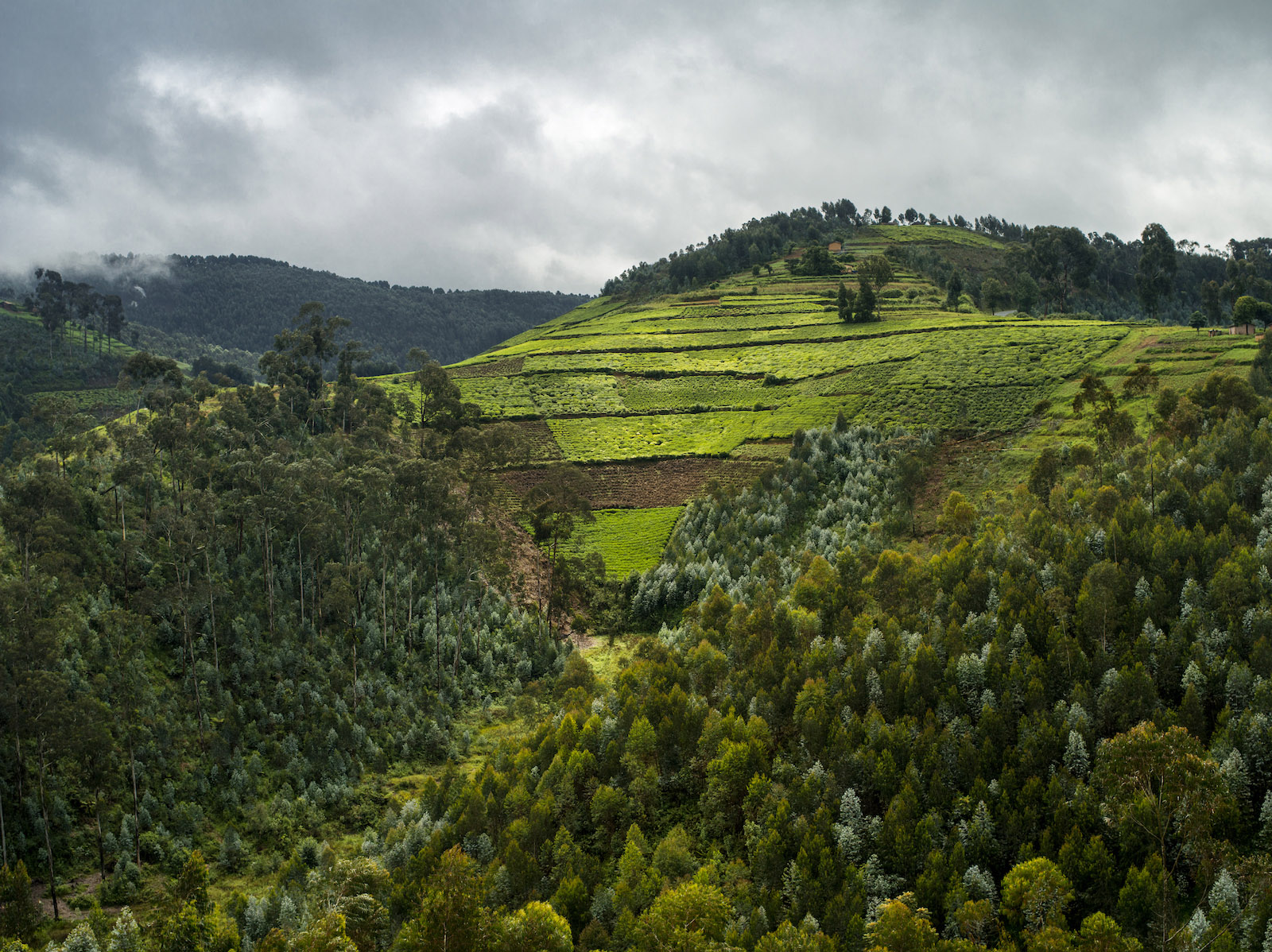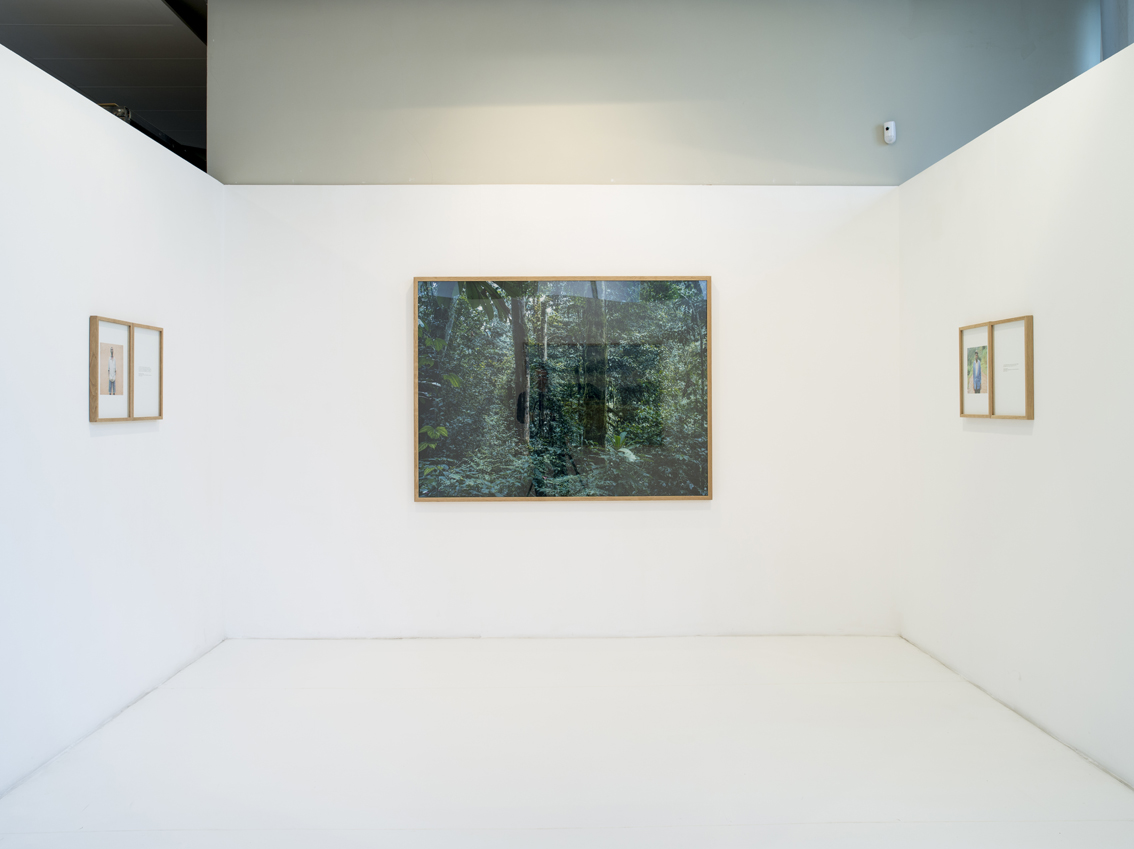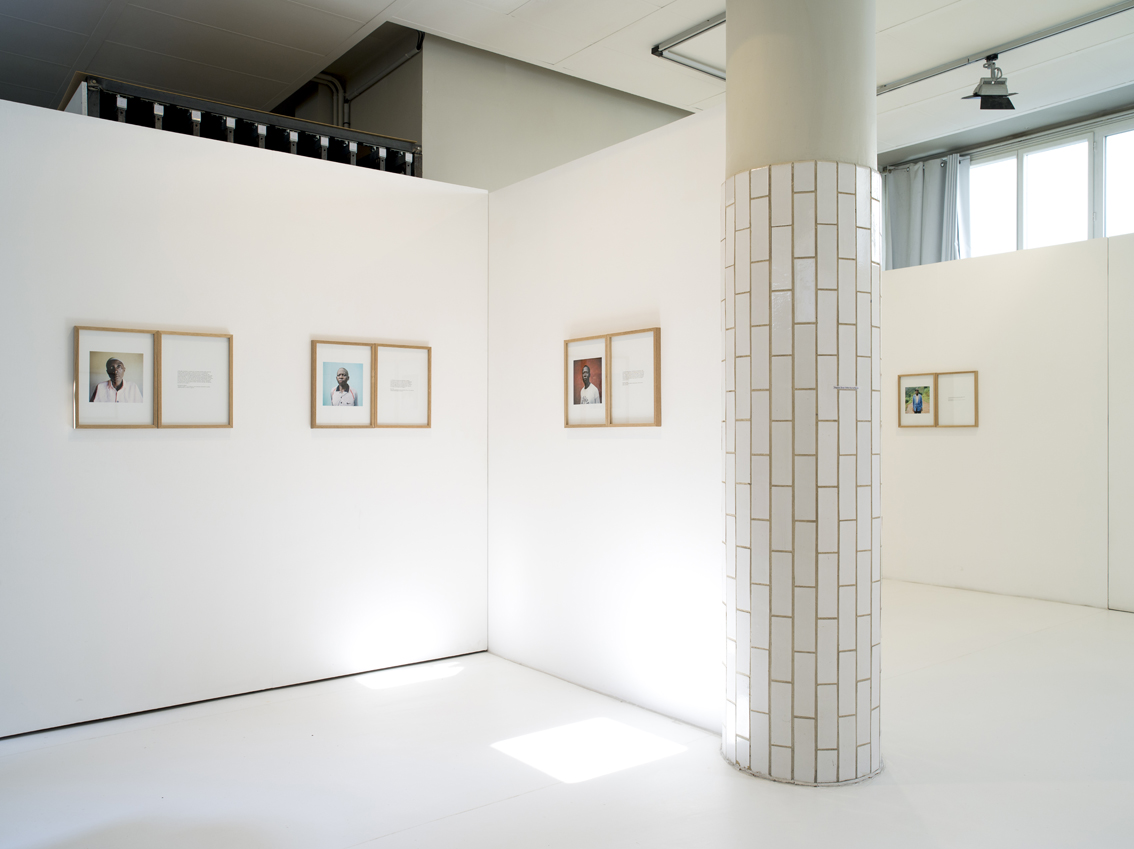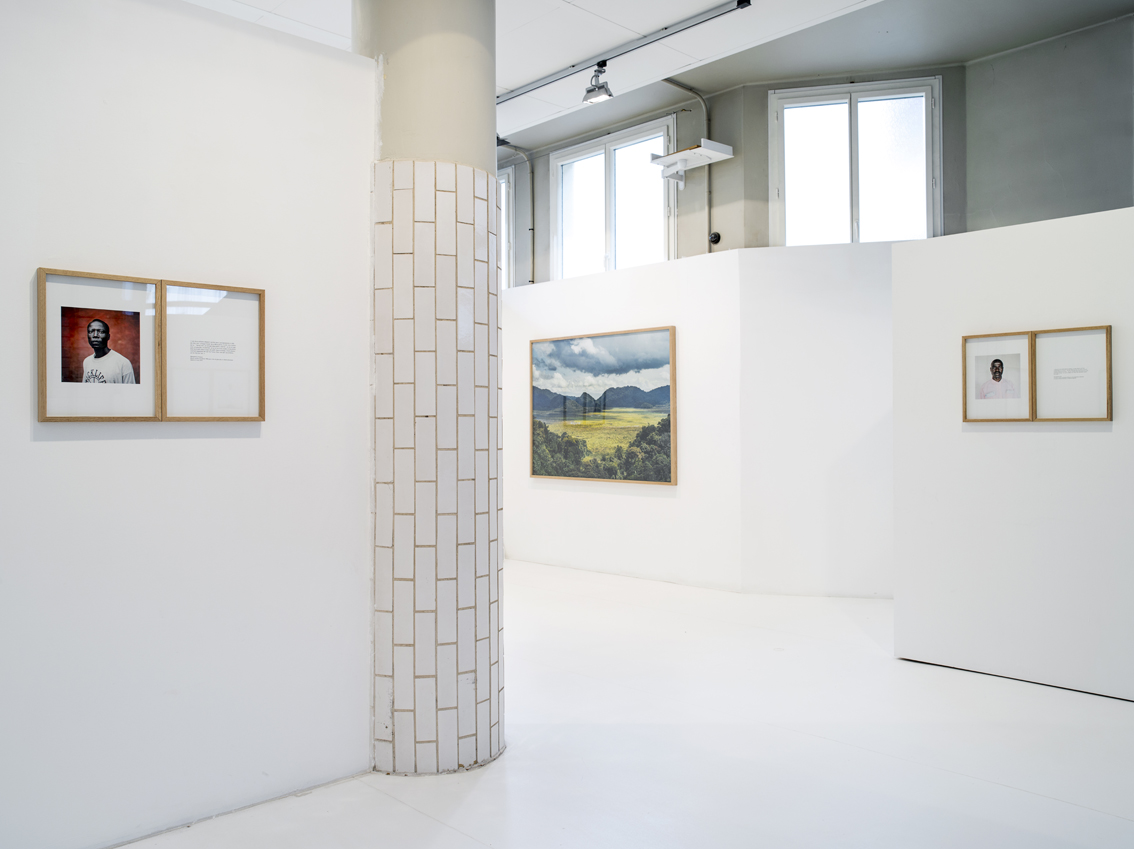Rwanda

Print: 35 x 47 inches
signed and numbered by the artist
Print: 35 x 47 inches INV Nbr. AC1405001 Kindly.



Presentation
The genocide in Rwanda took place amid general indifference.
On April 6, 1994, President Juvénal Habyarimana was assassinated. The authorities immediately put into practice their extermination plan, which sought to murder all opponents of their regime as well as the totality of Tutsis in Rwanda (and the remaining political authority immediately put into effect an extermination plan designed to eliminate both opposition to the political regime in power and all the Tutsis in Rwanda). In less than 100 days, the military, militias, and civilians murdered between 800,000 to a million people. Then, the genocidaires forced 2.5 million Hutus—a great many of whom had participated in the murders to flee to the borders.
Former photo reporter, Alexis Cordesse went to Rwanda for the first time in 1996, two years after the genocide. On the hills, he questioned the survivors, noted the signs of emptiness and absence, and the traumatic sequels of the aftermath. Confronting the unimaginable, he realized that he had to rethink his approach by questioning the failure of images to inform. From then on, he returned regularly to Rwanda and dedicated several bodies of work to the evocation of these events. His approach connects photographs, archival documents, and witness accounts.
Alexis Cordesse’s way of working is far from a moralizing discourse on mass crime, the victims’ suffering and the inhumanity of the executioner. Rather it is an inquiry on the power of images to speak out uniquely and by themselves about the essence of what happened.
His approach also invites the viewer to reflect on the crime rather than to contemplate the image.
Press
PRESS RELEASE
The exhibition is made up of three sections showing three collections made between 1996 and 2013.
I. Itsembatsemba, Rwanda one genocide later
Itsembatsemba, Rwanda one genocide later, the result of a collaboration between the photographer Alexis Cordesse and the film maker Eyal Sivan, is an experimental short film produced using black and white photographs, sound ecordings and archive material from “Radio Télévision Libre des Mille Collines” (“One Thousand Hills Free Radio and Television”) – RTLM, the famous “hate radio”.
Alexis went to Rwanda for the first time in 1996. He photographed and took sound recordings during ceremonies commemorating the genocide, exhumations and reburials of victims’ remains, in sanctuaries and asylums. On the hills, life is slowly getting back to normal. He recorded the imprint of absence and the after-effects of the trauma. While, in 1994, the flood of iconic images depicting the exile and the suffering of refugees largely took the focus away from the scandal of the genocide, the photographer realised the urgent need to bear witness to the past, to pinpoint the specifics of the crimes perpetrated in Rwanda amid general indifference.
Using the narrative resources of cinematic montage, the images are edited together in sequences with ambient sounds as well as archive material from RTLM. This radio station was launched in 1993 by Hutu extremists and was the most popular of the « hate media ». Mixing popular music from Congo and racist propaganda, it played a crucial role in spreading ethnic ideology, and, subsequently, coordinating and encouraging the killings. The words of the radio provide incriminating evidence against the genocide’s perpetrators. In the film, they come to contaminate and complicate the visual representation of horror by reminding us of the specificity of the crimes. Based on the need to consider a new framework for representation and perception, this experimental essay helps reformulate the question of the “unrepresentable”.
“Itsembatsemba, Rwanda one genocide later” was made for the 25-year anniversary of Doctors Without Borders (MSF). It was presented at the dOCUMENTA 11 of Kassel in 2002, directed by Okwui Enwezor, among many festivals. In 1997 it received a Golden Gate Award at the San Francisco International Film Festival, and a special mention at the International Festival of Documentary and Short Film of Bilbao
II –Confession, 2004
Ten years later, more and more confessions were being obtained in prisons, with the incentives of sentence reduction and conditional release. Alexis Cordesse travelled to the province of Kibuyé, in the western part of the country, where 59,050 Tutsis were murdered between April and June 1994. He interviewed and photographed Rwandans, both male and female, who had confessed to their participation in the genocide. Some were on conditional release and others were still being detained. Most of them were still waiting for their trial.
The collection consists of twelve diptychs each made up of a full frontal colour portrait and an extract of their confession. Information about the perpetrator’s identity (name, age), activity prior to arrest and legal situation (date of arrest, charge, date of confession, sentence if applicable) is displayed near each piece.
The photographer worked at eye level, closely with his subjects. Without resorting to dramatic staging or lighting effects, he concentrated on revealing the ambiguity and complexity of these people without reducing the relationship to a moral judgment. This process of showing evil embodied in an individual is emphasised by the layout of the exhibition space. The diptychs are made up of small pictures displayed at eye level; the small character size of the texts forces the viewer to get closer in order to read them. The deliberately small scale of the display contrasts with the enormity of the crimes. An intimate connection is created with the images and testimonies, leading the viewers to consider the distance from which they should look at these men and women.
This work was published in 2004 in a special issue by the daily newspaper Libération.
III. Absences, 2013
In May 2013, Alexis Cordesse returned to Rwanda to photograph nature in which all human presence is absent. These photos take us on a journey from the rolling hills of Kibuye, to the Nyungwe rainforest, via the marshy plains of Bugesera and muddy waters of the Nyabarongo. The images dialogue with landscape painting (from Friedrich’s fluffy mountains to Douanier Rousseau’s teeming jungles), all the while readily playing with colonialist clichés portraying Rwanda as an « Eden of a thousand hills ». The landscapes, in extreme contrast to the horrors of genocide, seem to have regained the peace and quiet that once characterised them.
Absences borrows from earlier photographs (images from Itsembatsemba as well as from the press) to make us uncomfortably aware that, twenty years earlier, these places of original beauty were home to such horror. Confronted with the ambivalence these landscapes reveal, it is not so much about admiring their irrepressible beauty than probing the cracks, the invisible mark that history has left behind on them. They are trompe-l’œil, traps not refuges, open graves where luxuriant nature is shown stubbornly going about its job of living. Nature that, in appearance, is deaf to man’s story.
This body of work is completed by two photos of memorial stones, in Ntarama and Gishwati, with victims’ names engraved on them, as well as witness accounts from three survivors and a “righteous” Hutu collected by the photographer while in the country. Faceless portraits reduced to a mere audio presence, these recorded accounts will be available to listen to at the exhibition itself. This set-up opens a new space for perception where viewers will have to use their imagination, their ability to picture the event by measuring the discrepancy between these silent landscapes and the accounts of what people lived through.
“(...) My parents lived near here. They had seven children. Everyone was killed, I am the only survivor. As I was alone, I didn’t get the chance to finish my studies. We live with the killers as we have no choice. Of course it’s better to forgive, but only those that ask for forgiveness once they have confessed to everything they did and why they did it. Then you can forgive, as forgiveness is necessary in life. But when you are unlucky enough to live with them again, and they haven’t told the whole truth, there is still something hidden, especially when it is where the bodies of our loved ones are so we can bury them, then I say that it is like a rocky road that you must learn to endure. We say hello to them, some reply willingly, others pretend that everything is ok. We try and live together. (...)”
Uwababyeyi Odette, grower


